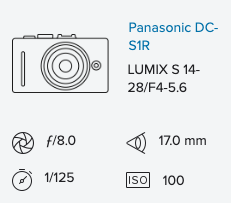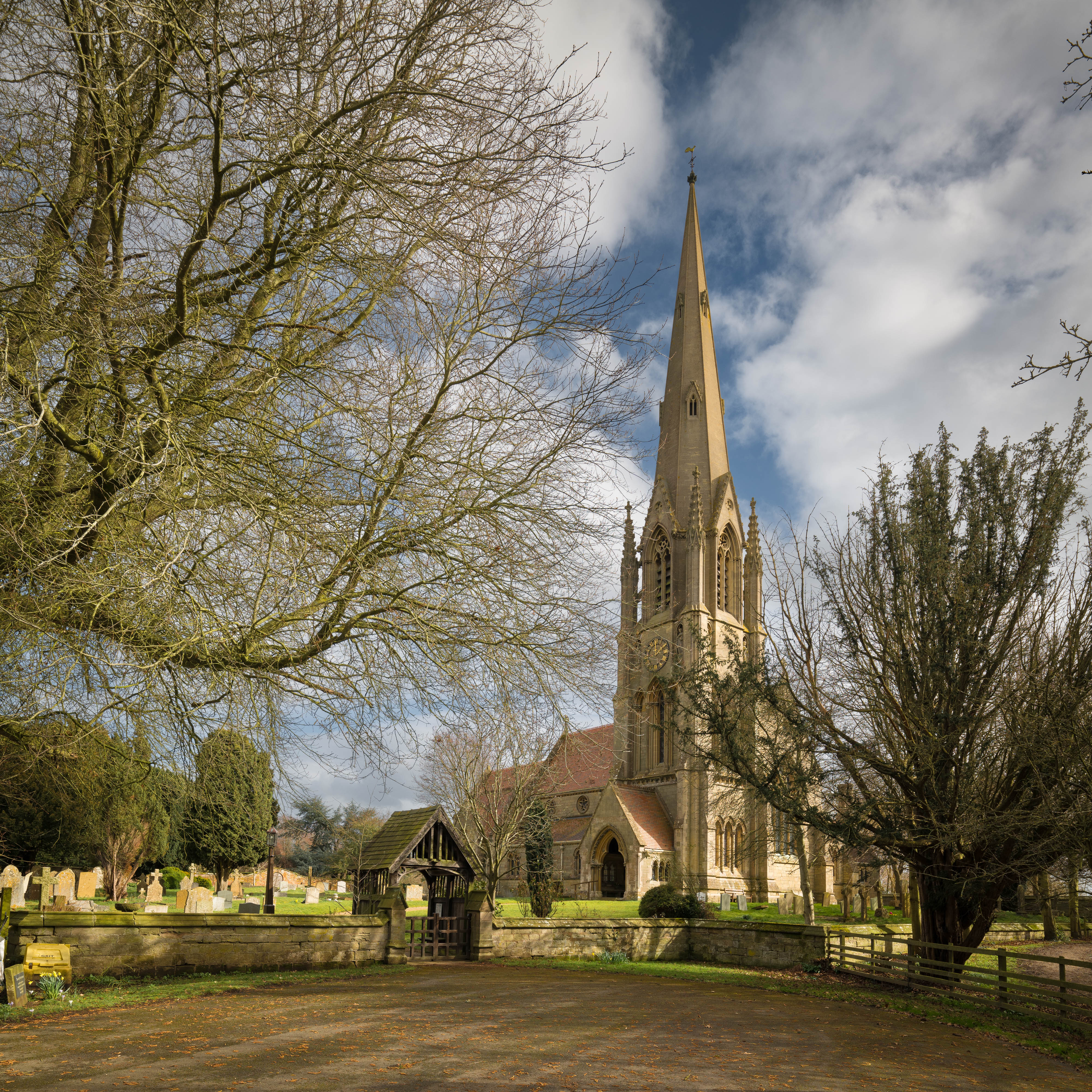pdk42
Moderator
I've been a serious amateur photographer since my teens back in the 1970s. I'm mostly into landscapes. You can see some of my work here:
Flickr: https://www.flickr.com/photos/paul_kaye (usually fresh images)
Adobe Portfolio: https://paulkaye.myportfolio.com/ (usually quite a bit out of date)
I've used a lot of gear over the years and whilst I'm not a total gear-head, I do from time to time re-evaluate my chosen system. For the past decade I've been an Olympus m43 user and whilst mostly happy with the results, I've always thought FF would be a better destination given what I shoot. Some brief forays into Sony E and Nikon Z didn't really do it for me, but late last year I gave Panasonic S a whirl - and I liked it!
So I needed lenses, including (especially) a good UWA zoom. The options at the time were the Lumix 16-35 f4, Sigma 16-28 f2.8, or the Leica 16-35 f3.5-4.5. Dismissing the latter for the obviously poor price/performance mix (!), it left the Lumix vs the Sigma. It didn't seem from the various reviews I read that the Lumix was optically any better than the Sigma but the Sigma new was still cheaper than the Lumix used, so the choice was easy. The max aperture really wasn't a consideration since I shoot nearly everything at f8 or f11.
But then Panasonic announced the 14-28. On the face of it, this would be my ideal UWA - 14mm at the wide end (I like W I D E) and actually smaller and lighter than the Sigma. So I pre-ordered the 14-28 and waited, and waited. With a Scotland photo trip looming and still now without a UWA, I did a panic buy of the Sigma; and then the Lumix arrived the day before I left!
So, I've currently got both of them in my possession. I'll probably sell the Sigma, but I thought before I did I'd do some quick comparisons.
1) Sharpness
I'm quite picky with across-the-frame sharpness for UWA lenses, esp at infinity focus; it's a really an important attribute for shooting landscapes. And by this measure they both do an excellent job. Here are two images both on the S1R, one with each lens. Both are shot at f11 (which is where I shoot landscape 90% of the time). The images are shot in raw, on a tripod, and processed in LR. In LR I set the WB to "Daylight" for both and also pushed shadows +100 and pulled highlights -100 (it was a very contrasty scene). Other parameters are using LR defaults. Unfortunately, the lighting was changing very rapidly that day so although the exposure is the same on both, the light is actually a little better (more contrast) with the Sigma image. C'est la vie!
Sigma 16-28
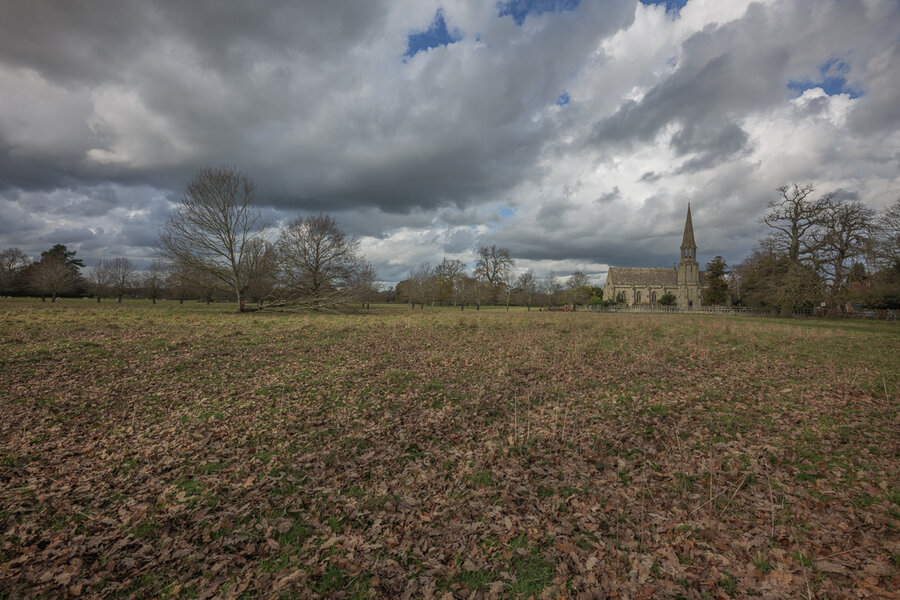
Lumix 14-28
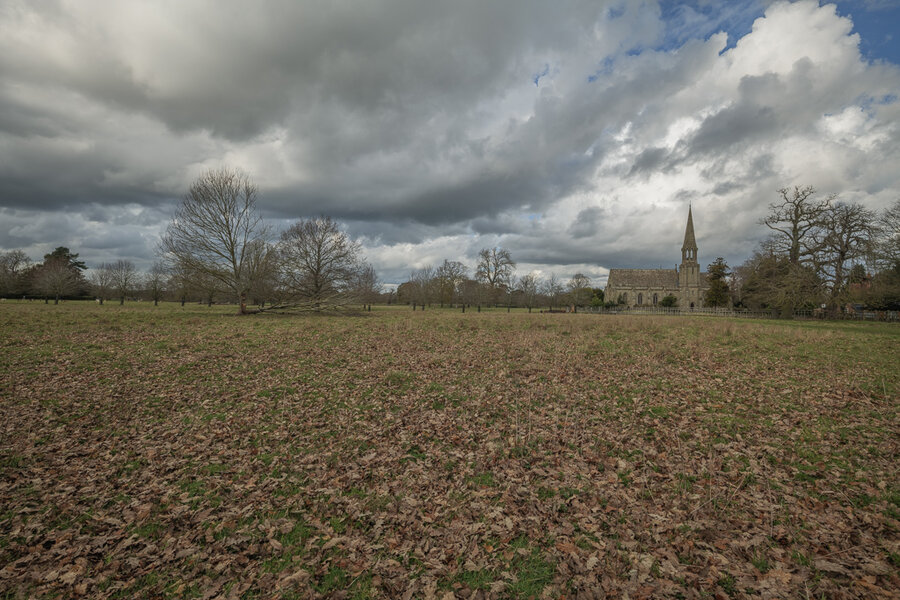
You'll notice that there are some colour differences. The Sigma renders with a slight magenta cast, the Lumix slightly greener. I think the Lumix is the more natural/real, but you could easily get any result you want by an appropriate profile/tweak in LR so I don't think these differences will bother most people.
Here are some crop comparisons to assess sharpness:
Centre:

Left edge:
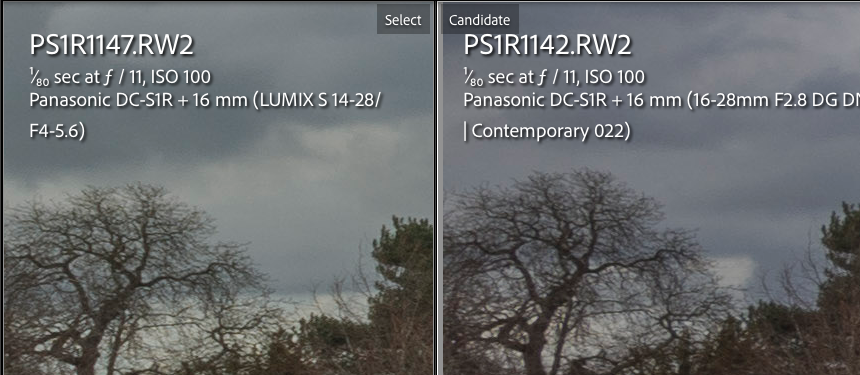
Right edge:
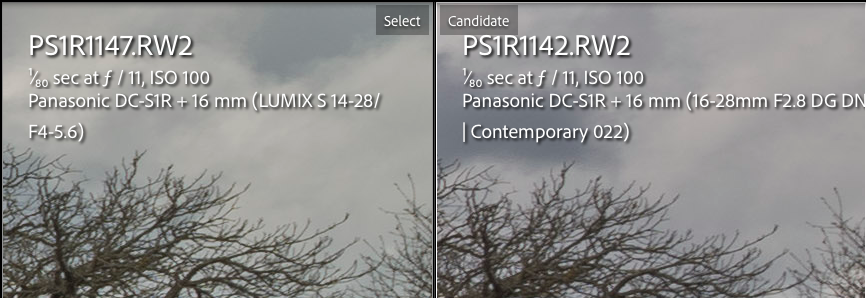
Bottom left:

Bottom right:
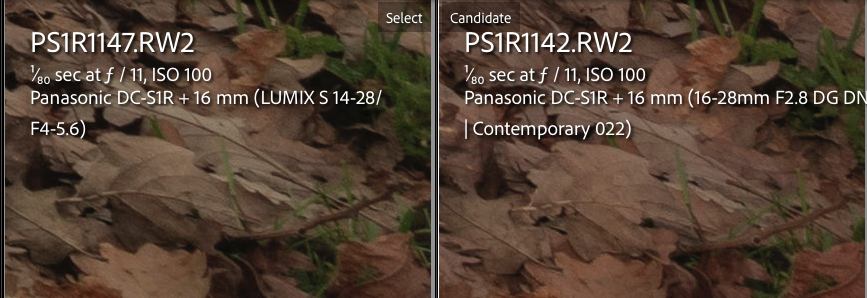
Remember that these are 100% crops from the 47Mp S1R. Overall, I think this is really an excellent result from both lenses. I'd be very happy with either.
Although these are shot at f11, neither lens displays significant deterioration as the aperture opens up. Even the Sigma at f2.8 shows good sharpness right out into the corners. I'd be happy to shoot with either wide open if I needed to without worrying about mushy corners.
2) Flare
These two shots are into sun. They both show a little flare, but it's not a lot for either. I also had a UV filter attached to both so I can't rule out effects from that. I think they both do well in handling flare.
Sigma 16-28

Lumix 14-28
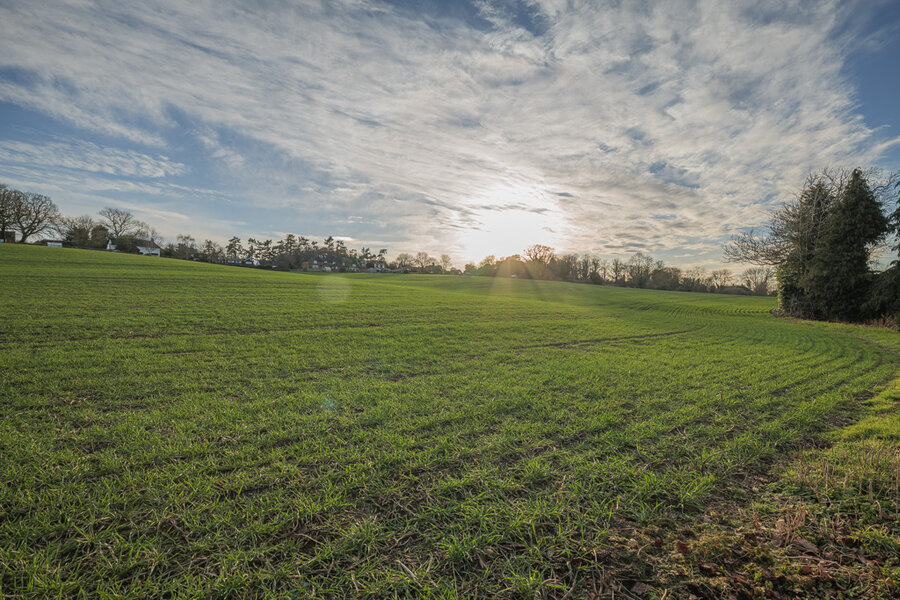
3) CA / Fringing
It's hard to spot, but there is a tiny amount of CA and fringing on the Sigma, but virtually nothing on the Lumix. What little there is on the Sigma can be easily tidied up in LR, so I have no complaints with either.

4) Sunstars
The Sigma is a clear winner here. Both shot at f16:

5) 14mm vs 16mm
14mm
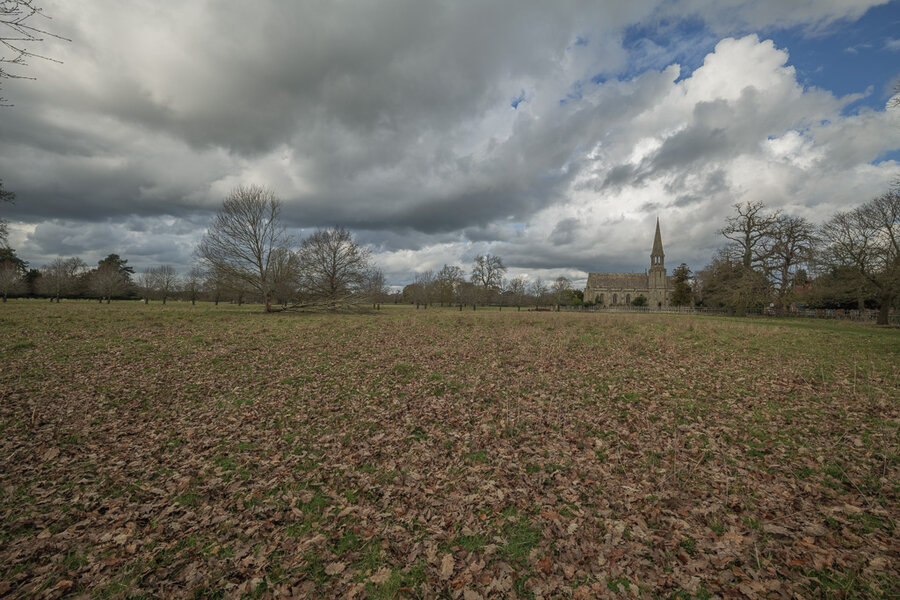
16mm
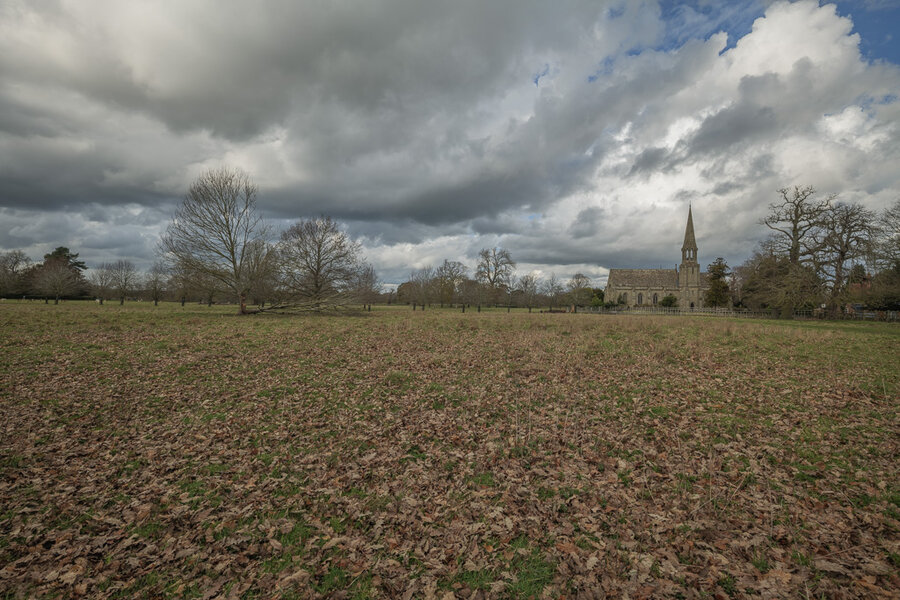
6) Build, size, weight, handling, operation etc
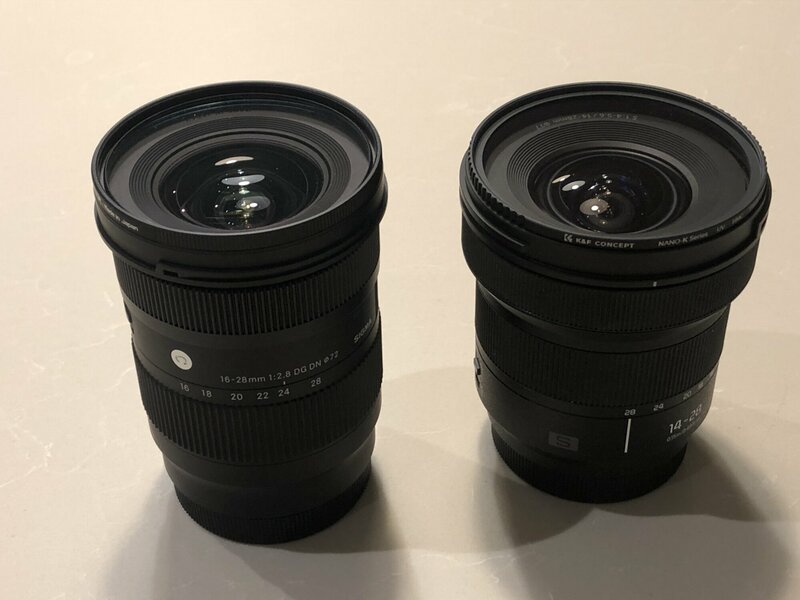
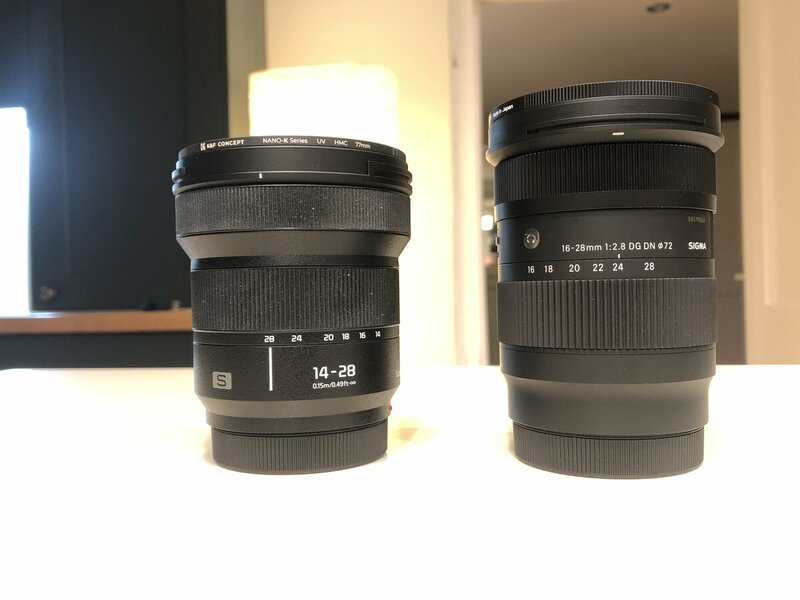
Best expressed as a table:
7) Conclusion
There's little to separate these two lenses so far as basic IQ is concerned. I'd be very happy with either. If I had to separate them, I'd say this:
So, it would seem to me that the Sigma is really a better lens for interior architecture/low light (night cityscapes etc) rather than landscapes (faster, nice sunstars), whereas the Lumix is better for landscape (wider, weather-sealed, small/lighter). But either would I'm sure suit both genres if needed.
Hope this little comparison has been helpful!
Flickr: https://www.flickr.com/photos/paul_kaye (usually fresh images)
Adobe Portfolio: https://paulkaye.myportfolio.com/ (usually quite a bit out of date)
I've used a lot of gear over the years and whilst I'm not a total gear-head, I do from time to time re-evaluate my chosen system. For the past decade I've been an Olympus m43 user and whilst mostly happy with the results, I've always thought FF would be a better destination given what I shoot. Some brief forays into Sony E and Nikon Z didn't really do it for me, but late last year I gave Panasonic S a whirl - and I liked it!
So I needed lenses, including (especially) a good UWA zoom. The options at the time were the Lumix 16-35 f4, Sigma 16-28 f2.8, or the Leica 16-35 f3.5-4.5. Dismissing the latter for the obviously poor price/performance mix (!), it left the Lumix vs the Sigma. It didn't seem from the various reviews I read that the Lumix was optically any better than the Sigma but the Sigma new was still cheaper than the Lumix used, so the choice was easy. The max aperture really wasn't a consideration since I shoot nearly everything at f8 or f11.
But then Panasonic announced the 14-28. On the face of it, this would be my ideal UWA - 14mm at the wide end (I like W I D E) and actually smaller and lighter than the Sigma. So I pre-ordered the 14-28 and waited, and waited. With a Scotland photo trip looming and still now without a UWA, I did a panic buy of the Sigma; and then the Lumix arrived the day before I left!
So, I've currently got both of them in my possession. I'll probably sell the Sigma, but I thought before I did I'd do some quick comparisons.
1) Sharpness
I'm quite picky with across-the-frame sharpness for UWA lenses, esp at infinity focus; it's a really an important attribute for shooting landscapes. And by this measure they both do an excellent job. Here are two images both on the S1R, one with each lens. Both are shot at f11 (which is where I shoot landscape 90% of the time). The images are shot in raw, on a tripod, and processed in LR. In LR I set the WB to "Daylight" for both and also pushed shadows +100 and pulled highlights -100 (it was a very contrasty scene). Other parameters are using LR defaults. Unfortunately, the lighting was changing very rapidly that day so although the exposure is the same on both, the light is actually a little better (more contrast) with the Sigma image. C'est la vie!
Sigma 16-28

- Panasonic - DC-S1R
- 16-28mm F2.8 DG DN | Contemporary 022
- 16.0 mm
- ƒ/11
- 1/80 sec
- Pattern
- Auto exposure
- -0.7
- ISO 100
Lumix 14-28

- Panasonic - DC-S1R
- LUMIX S 14-28/F4-5.6
- 16.0 mm
- ƒ/11
- 1/80 sec
- Pattern
- Auto exposure
- -0.7
- ISO 100
You'll notice that there are some colour differences. The Sigma renders with a slight magenta cast, the Lumix slightly greener. I think the Lumix is the more natural/real, but you could easily get any result you want by an appropriate profile/tweak in LR so I don't think these differences will bother most people.
Here are some crop comparisons to assess sharpness:
Centre:

Left edge:

Right edge:

Bottom left:

Bottom right:

Remember that these are 100% crops from the 47Mp S1R. Overall, I think this is really an excellent result from both lenses. I'd be very happy with either.
Although these are shot at f11, neither lens displays significant deterioration as the aperture opens up. Even the Sigma at f2.8 shows good sharpness right out into the corners. I'd be happy to shoot with either wide open if I needed to without worrying about mushy corners.
2) Flare
These two shots are into sun. They both show a little flare, but it's not a lot for either. I also had a UV filter attached to both so I can't rule out effects from that. I think they both do well in handling flare.
Sigma 16-28

- Panasonic - DC-S1R
- 16-28mm F2.8 DG DN | Contemporary 022
- 16.0 mm
- ƒ/11
- 1/50 sec
- Pattern
- Auto exposure
- ISO 100
Lumix 14-28

- Panasonic - DC-S1R
- LUMIX S 14-28/F4-5.6
- 16.0 mm
- ƒ/11
- 1/50 sec
- Pattern
- Auto exposure
- ISO 100
3) CA / Fringing
It's hard to spot, but there is a tiny amount of CA and fringing on the Sigma, but virtually nothing on the Lumix. What little there is on the Sigma can be easily tidied up in LR, so I have no complaints with either.

4) Sunstars
The Sigma is a clear winner here. Both shot at f16:

5) 14mm vs 16mm
14mm

- Panasonic - DC-S1R
- LUMIX S 14-28/F4-5.6
- 14.0 mm
- ƒ/11
- 1/80 sec
- Pattern
- Auto exposure
- -0.7
- ISO 100
16mm

- Panasonic - DC-S1R
- LUMIX S 14-28/F4-5.6
- 16.0 mm
- ƒ/11
- 1/80 sec
- Pattern
- Auto exposure
- -0.7
- ISO 100
6) Build, size, weight, handling, operation etc


Best expressed as a table:
| Lumix 14-28 | Sigma 16-28 | |
| Controls | Zoom, focus, AF/MF switch | Zoom, focus, AF/MF switch |
| Zoom action | Clockwise min-max. Internal zooming (or more correctly, the front element moves, but within the outer barrel so size doesn't change). | Anti-clockwise min-max. Internal zooming. |
| Length / width | 89.9mm / 84mm | 100.6mm / 77.2mm |
| Filter size & vignetting | 77mm. No vignetting at 14mm with a slim filter. Some vignetting with two. No vignetting at 15mm with two filters. | 72mm. No vignetting at 16mm with two slim filters. |
| Build & feel | Average. The focus and zoom rings are typical Panasonic S - rubberised and dust traps. The build is all plastic and feels it. It's OK, but it doesn't feel special. | Above average. The focus and zoom rings are typical Sigma "Contemporary" but are nice to handle and operate. The build is plastic but it feels better than the Lumix. |
| Weather sealing | Weather sealed against splashes | Not weather sealed |
| Weight | 372g | 480g |
| Close focussing | Very close (semi macro, but goodness knows why anyone would buy a UWA for macro). | Not so close. |
7) Conclusion
There's little to separate these two lenses so far as basic IQ is concerned. I'd be very happy with either. If I had to separate them, I'd say this:
| Lumix 14-28 | Sigma 16-28 | |
| Field of view | Excellent range. Uber wide at 14mm. 2x zoom range. | OK. 16mm might be wide enough for most, but 28mm at long end means only a 1.75 zoom range which isn't a lot. |
| Max aperture | f4-f5.6. Not great for low light. Probably not the best internal architecture lens. Ideal for landscape | f2.8 - much better for internal architecture |
| Sun stars | Average for a zoom. Not well defined. | Really excellent for a zoom. |
So, it would seem to me that the Sigma is really a better lens for interior architecture/low light (night cityscapes etc) rather than landscapes (faster, nice sunstars), whereas the Lumix is better for landscape (wider, weather-sealed, small/lighter). But either would I'm sure suit both genres if needed.
Hope this little comparison has been helpful!
Last edited:

